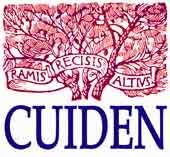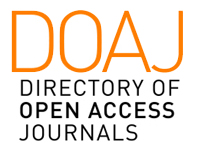Changes in the occupational roles of parents and caregivers after the birth of a child with a disability
DOI:
https://doi.org/10.25214/25907816.1145Keywords:
life changing events, parenting, caregivers, disabled children, Occupational TherapyAbstract
The birth of a child with a disability transforms the daily life of a family, changing the occupational roles performed. The study aimed to identify possible changes in the occupational roles of parents and caregivers after the birth of a child with a disability. The approach was quantitative and qualitative. Data collection took place using the Role Checklist and a semi-structured interview. Descriptive statistics and content analysis were used for the analyses. Ten parents and caregivers of students from a School and Association of Parents and Friends of the Exceptional in the central region of Rio Grande do Sul, Brazil, participated in the study. The birth of a child with a disability may influence the performance of occupational roles, highlighting a 70% and 60% decrease in the roles of student and worker, respectively. All participants considered these to be very important in their daily lives. Over time, families have established adaptation and localization strategies in the family dynamics. Rescuing occupational roles or acquiring new ones is an important path for intervention with this population.
Downloads
References
Barbosa, M. R. P. & Fernandes, F. D. M. (2009). Qualidade de vida dos cuidadores de crianças com transtorno do espectro autístico. Revista da Sociedade Brasileira de Fonoaudiologia, 14(4), 482-486. https://doi.org/10.1590/S1516-80342009000400009
Bardin, L. (2011). Análise de conteúdo. Edições 70.
Barrozo, B. M., Nobre, M. I. R. & Montilha, R. de C. I. (2015). As alterações nos papéis ocupacionais de cuidadores de pessoas com deficiência visual. Revista de Terapia Ocupacional da Universidade de São Paulo, 26(3), 409-417. https://doi.org/10.11606/issn.2238-6149.v26i3p409-417
Behar, R.C.R. (2018). A maternidade e seu impacto nos papéis ocupacionais primíparas [Trabalho final de graduação, Universidade Federal da Paraíba]. Repositório UFPB. https://repositorio.ufpb.br/jspui/bitstream/123456789/12177/1/RCRB29062018.pdf
Cordeiro, J. R. (2005). Validação da lista de identificação de papéis ocupacionais em pacientes portadores de doença pulmonar obstrutiva crônica (DPOC) no Brasil [Tese de mestrado, Universidade Federal de São Paulo]. Repositório Unifesp. https://repositorio.unifesp.br/handle/11600/20599
Cordeiro, J. R., Camelier, A., Oakley, F. & Jardim, J. R. (2007). Cross-cultural reproducibility of the Brazilian Portuguese version of the Role Checklist for chronic obstructive pulmonary disease patients. American Journal of Occupational Therapy, 61(1), 33-40. https://doi.org/10.5014/ajot.61.1.33
Creswell, J. W. (2010). Uma estrutura para projeto. In J. W. Creswell, Projeto de Pesquisa: métodos qualitativos, quantitativo e misto (pp.21-30). Artmed/Bookman.
Cruz, D. M. C. & Emmel, M. L.G. (2013). Associação entre papéis ocupacionais, independência, tecnologia assistiva e poder aquisitivo em sujeitos com deficiência física. Revista Latino-Americana de Enfermagem, 21(2), 484-491. https://doi.org/10.1590/S0104-11692013000200003
De Las Heras, C. G. (2015). Modelo de ocupación humana. Síntesis.
Estanieski, I. I. & Guarany, N. R. (2015) Qualidade de vida, estresse e desempenho. Revista de Terapia Ocupacional da Universidade de São Paulo, 26(2),194-200. https://doi.org/10.11606/issn.2238-6149.v26i2p194-200
Ferreira, C. L. S., Lúcia, M. O. & Maia, E. M. C. (2012). Resiliência em idosos atendidos na Rede de Atenção Básica de Saúde em municípios do nordeste brasileiro. Revista da Escola de Enfermagem da USP, 46(2), 328-334. https://doi.org/10.1590/S0080-62342012000200009
Forsyth, K. & Kielhofner, G. (2003). Model of Human Occupation. In P. Kramer, A. J. Hinojos & C. B. Royeen (eds.), Perspectives in Human Occupation: participation in life (pp. 45-86). Lippincott Williams & Wilkins.
Forsyth, K. & Kielhofner, G. (2013). The model of human occupation: Embracing the complexity of occupation by integrating theory into practice and practice into theory. In E.A.S. Duncan (ed.), Foundations for practice in Occupational Therapy (pp. 51-80). Churchill Livingstone.
Guerra, C. S., Dias, M. D., Filha, M. O. F., Andrade, F. B., Reichert, A. P. S. & Araújo, V. S. (2015). Do sonho à realidade: vivência de mães de filhos com deficiência. Texto contexto em enfermagem, 24(2) 459- 466. https://doi.org/10.1590/0104-07072015000992014
Hillman, A. M. & Chapparo, C.J. (1995). An investigation of occupational role performance in men over sixty years of age, following a stroke. Journal of Occupational Science, 2(3), 88-99. https://doi.org/10.1080/14427591.1995.9686399
Hocking, C. (2011). Contribuição da ocupação para a saúde e o bem-estar. En M. E Neistadt & E. B. Crepeau, Willard & Spackman: Terapia Ocupacional 9. ed. (pp. 45-55). Médica Panamericana.
Iaconelli, V. (2013). Mal-estar na maternidade: do infanticídio à função materna [Tese Doutorado, Universidade Federal de São Paulo]. Digital Library USP. https://doi.org/10.11606/T.47.2013.tde-07052013-102844
Parreira, M. M., Cavalcanti, A., Cunha, J. H. S. & Cordeiro, J. J. R. (2013). Papéis ocupacionais de indivíduos em condições reumatológicas. Revista de Terapia Ocupacional da Universidade de São Paulo, 24 (2), 127-133. http://dx.doi.org/10.11606/issn.2238-6149.v24i2p127-133
Polezi, S.C. (2021). Papéis e desempenho ocupacional de mães de crianças com deficiências [Dissertação de mestrado, Universidade Federal de São Carlos]. Repositório UFSCar. https://repositorio.ufscar.br/handle/ufscar/14473?show=full
Polatajko, H. J., Townsend, E. A. & Craik, J. (2013). The CMOP-E and other models of occupation. In E.A. Townsend & H. J. Polatajko (eds.), Enabling occupation II: Advancing an occupational therapy vision of health, well-being, & justice through occupation (pp. 27-32). CAOT Publications ACE.
Santos, S. S. C., Pelzer, M. T. & Rodrigues, M. C. T. (2007). Condições de enfrentamento dos familiares cuidadores de idosos portadores de doença de Alzheimer. Revista Brasileira de Ciências do Envelhecimento Humano, 4(2), 114-126. http://repositorio.furg.br/handle/1/1798
Taylor, R. R. (2017). Kielhofner’s Model of Human Occupation 5th. ed. Wolter Kluwer.
Published
How to Cite
Issue
Section
License
Copyright (c) 2022 Human Occupation Journal

This work is licensed under a Creative Commons Attribution-NonCommercial-ShareAlike 4.0 International License.

| Article metrics | |
|---|---|
| Abstract views | |
| Galley vies | |
| PDF Views | |
| HTML views | |
| Other views | |











